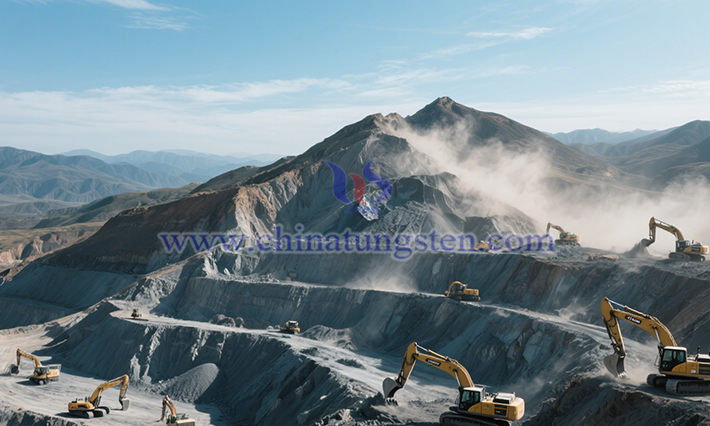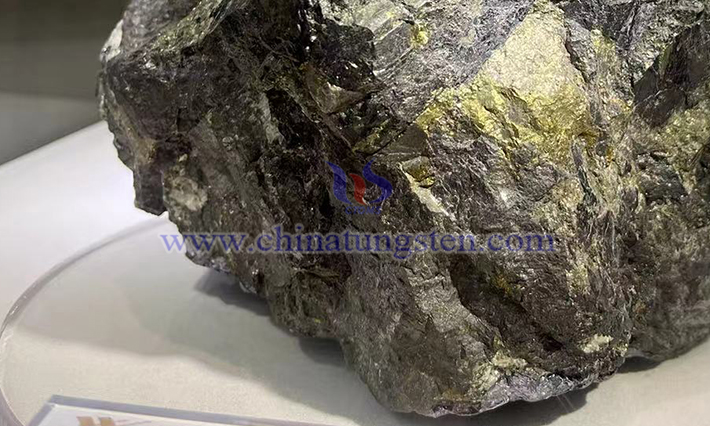Guangdong Baishizhang Molybdenum Mine Adds 100,000 Tons of Molybdenum Metal
- Details
- Category: Tungsten's News
- Published on Thursday, 03 July 2025 11:54
- Written by Xiaoting
- Hits: 9
The "Guangdong Wuhua County Baishizhang Mining Area Molybdenum Resource Verification Report," compiled by the Guangdong Institute of Mineral Resources Exploration, has successfully passed its review. The report indicates an additional 100,000 tons of molybdenum metal, elevating the resource scale to a large category. The project’s concession holder, granted mining rights in 2007, originally planned underground mining. However, due to low molybdenum prices at the time, the mine remained unoperational, leaving its resource advantage unexploited economically. To reverse this, in November 2022, the holder commissioned the institute to verify reserves and shifted the mining approach to open-pit extraction.

The Baishizhang molybdenum mine deposit belongs to the South China fold system tungsten-copper-molybdenum metallogenic province within the Circum-Pacific molybdenum metallogenic belt, formed during the Mesozoic Yanshan period. The mining area exposes upper Neoproterozoic Damari Formation metamorphic rocks and Middle Jurassic Zhangping Formation sedimentary rocks, with limited Quaternary sediment distribution. It is situated at the intersection of the northwest-trending Yangbantang fault, Guoshuitan fault, and northeast-trending Baishizhang fault. Regarding igneous rocks, based on their orientation, lithology, and relationships, the preliminary formation sequence is identified as: fine-grained biotite granite (stock) → fine-grained porphyritic granite (vein) → porphyry (vein) → fine-grained granite (hidden stock) → porphyry (vein) → diabase (vein).
The Baishizhang molybdenum mine deposit is hosted at the southeast end of the Baishizhang granite body, along the southwest inner and outer contact zones and the upper and lower plates of the Baishizhang fault. Covering a mineralized area of about 0.8 square kilometers, it forms a northwest-trending mineralized zone, 1,800 meters long and 200–500 meters wide, composed of quartz veins of varying thickness and density containing ore. Two main ore body types are identified: at the zone’s ends, thin-vein ore bodies dominated by molybdenite and wolframite-quartz; and in the central area, fine-vein ore bodies primarily of molybdenite-quartz.

The Baishizhang molybdenum ore contains 28 mineral types, including molybdenite, siderite, rutile, wolframite, scheelite, chalcopyrite, pentlandite, pyrrhotite, goethite, galena, magnetite, bismuthinite, native bismuth, and others. Molybdenite, the most significant ore component, appears as lead-gray to silver-gray flaky aggregates, with rare plate-like or elongated crystals. It exhibits wavy extinction, often showing a crumpled structure due to flexure, and is mainly hosted in quartz vein walls as small lens-shaped, sac-like, or irregular vein forms, or as thin films filling fractures, sporadically disseminated among quartz grains, with minor intergrowth or filling along wolframite crystal edges or gaps, and some fluorite fissure molybdenite in vein walls.
Wolframite, primarily in the upper ore body, is black to dark brown, occurring as semi-euhedral to anhedral plate-like crystals in aggregates or radiating clusters, mainly within quartz veins. Scheelite, colorless or yellowish-white, features semi-euhedral to anhedral granular structures with starry patterns, predominantly in the middle of quartz veins or filling fractures, gaps, or cleavage planes in broken wolframite crystals.
| Molybdenum Supplier: Chinatungsten Online www.molybdenum.com.cn | Tel.: 86 592 5129595/5129696 Email:sales@chinatungsten.com |
| Tungsten News & Prices: Chinatungsten Online news.chinatungsten.com | Molybdenum News & Molybdenum Price: news.molybdenum.com.cn |





 sales@chinatungsten.com
sales@chinatungsten.com